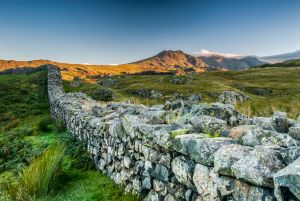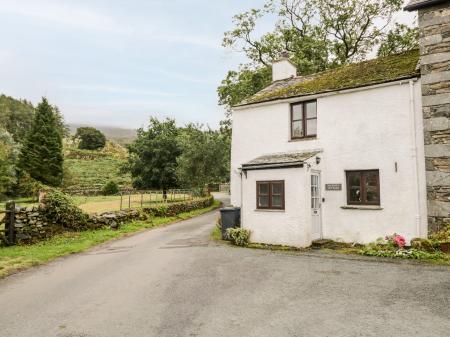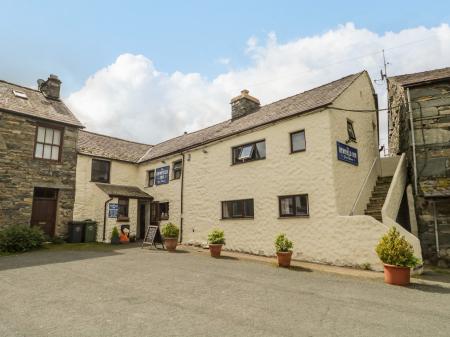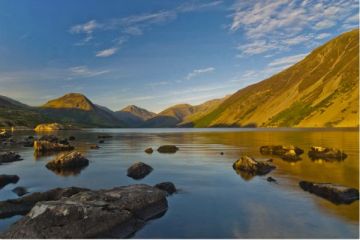
History
Sometime during the reign of Emperor Trajan, in the early 2nd century, the Roman occupiers of Britain began to build a fort at the head of Eskdale, on the western slopes of what is now Hardknott Pass. They called the fort Mediobogdum, and used it to control access along the road from their port at Ravenglass (Glannaventa) and Ambleside (Galava).
Hardknott was finished during the reign of Hadrian (117-138 AD). Part of an inscription found on the south gate records the presence of a garrison from the Fourth Cohort of Dalmatians, from the Balkan region.
When the Romans extended their military presence into southern Scotland in the late 130s AD, Hardknott fell out of use, but it was re-garrisoned by Emperor Marcus Aurelius in the 160s. It remained in use until the early 3rd century when it was finally abandoned. After that, it seems to have been used as a shelter by travellers and by army patrols.

What to See
The fort extends to 3 acres and is set on a spur of rocky land projecting out from Hardknott Fell. The fort rampart was built of stone, some of which has been rebuilt using collapsed stones. You can see evidence of internal angle towers at each corner of the fort, and gateways on all four sides.
The towers were later additions to the original fort design, and have no entrances at ground floor level. Presumably, they had either earthen ramps to a first-floor entrance, or they were accessed via a wall walk. The main gateway faced south. It seems likely that there would have been an earthen ramp within the walls, giving access to a parapet walk.
Three of the gateways have double portals, but the north gateway has just a single opening. You can still see a pivot hole for one of the wooden gates protecting the west gateway. Within the boundary rampart, you can see foundation walls of a granary, headquarters building, and commandant's house.
The headquarters building is built around a courtyard, with narrow rooms on all sides, possibly used for weapon storage. At the far side of the courtyard was a courtroom, and beyond this was a temple flanked by administrative offices.
The commandant's house seems to have been unfinished, perhaps an indication of the stop-start nature of the fort's use. To the right of the house are the granaries, where essential food stores were kept on raised floors supported by piers. This allowed air to circulate and hopefully keep the grain fresh, and also kept vermin away.

Curiously, there is scant evidence of barracks for ordinary soldiers. It is possible that due to the cramped location, soldiers may have lived in leather tents, which would have made life in winter even harder.
One of the most intriguing remains is a stone bath-house just outside the south-east corner of the rampart. This has four chambers; a furnace, and separate baths for hot, cold, and warm water. A separate, circular chamber with its own furnace area seems to have been used like a modern sauna.
The Parade Ground
Above the fort to the east is a large open area used as a parade ground, where the soldiers would train and exercise. To the west of this parade ground is a ramp leading to a viewing platform where commanding officers could watch the training exercises. This is the best-preserved Roman parade ground in England.
Visiting
I've visited the fort several times, and each time I am simply amazed at the incredible beauty of the location. What must a Roman soldier have felt, stationed here in this stunning, remote, and dramatically located fort? The winters must have been harsh and difficult, but in summer the stunning beauty of the landscape must have offered at least some consolation!









 We've 'tagged' this attraction information to help you find related historic attractions and learn more about major time periods mentioned.
We've 'tagged' this attraction information to help you find related historic attractions and learn more about major time periods mentioned.



